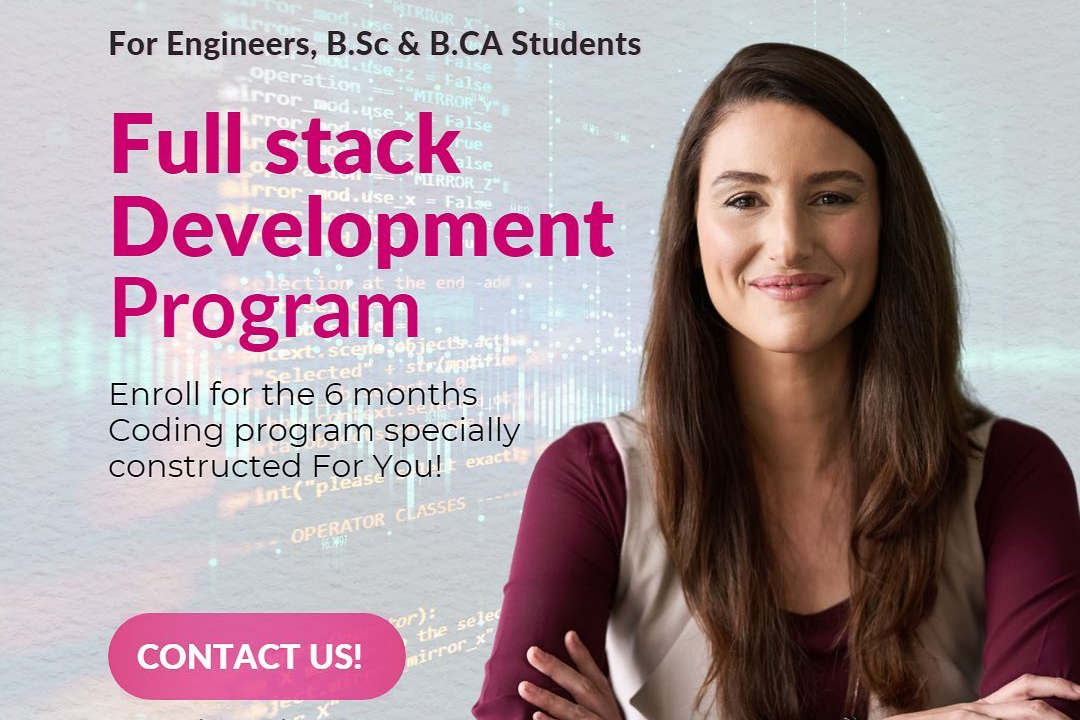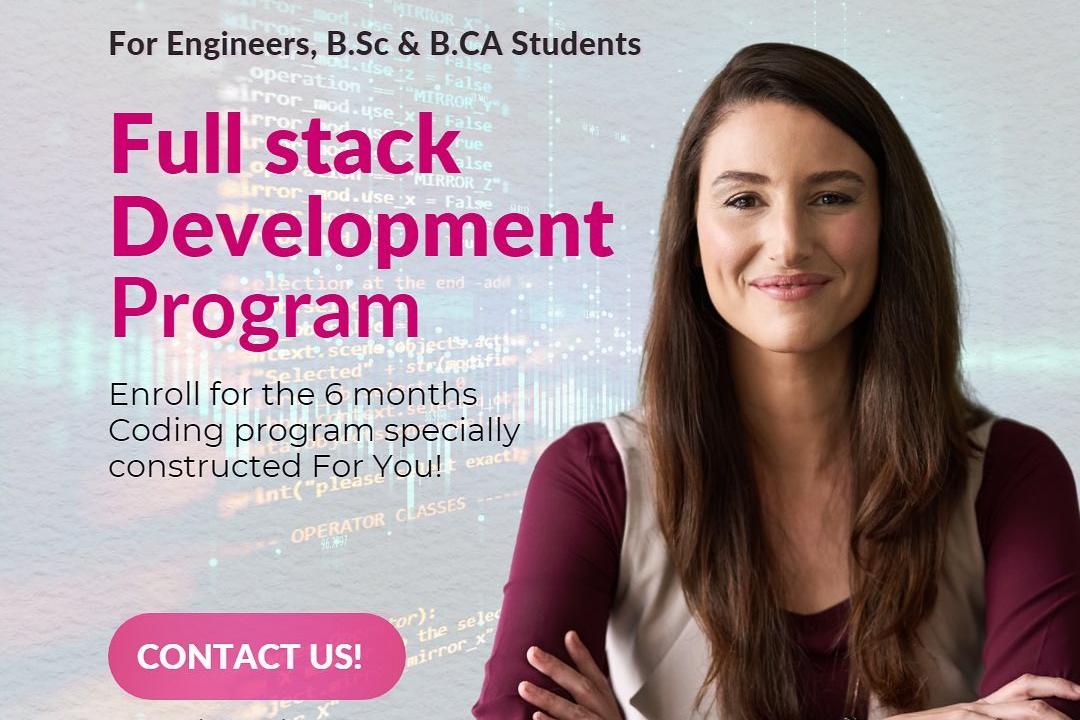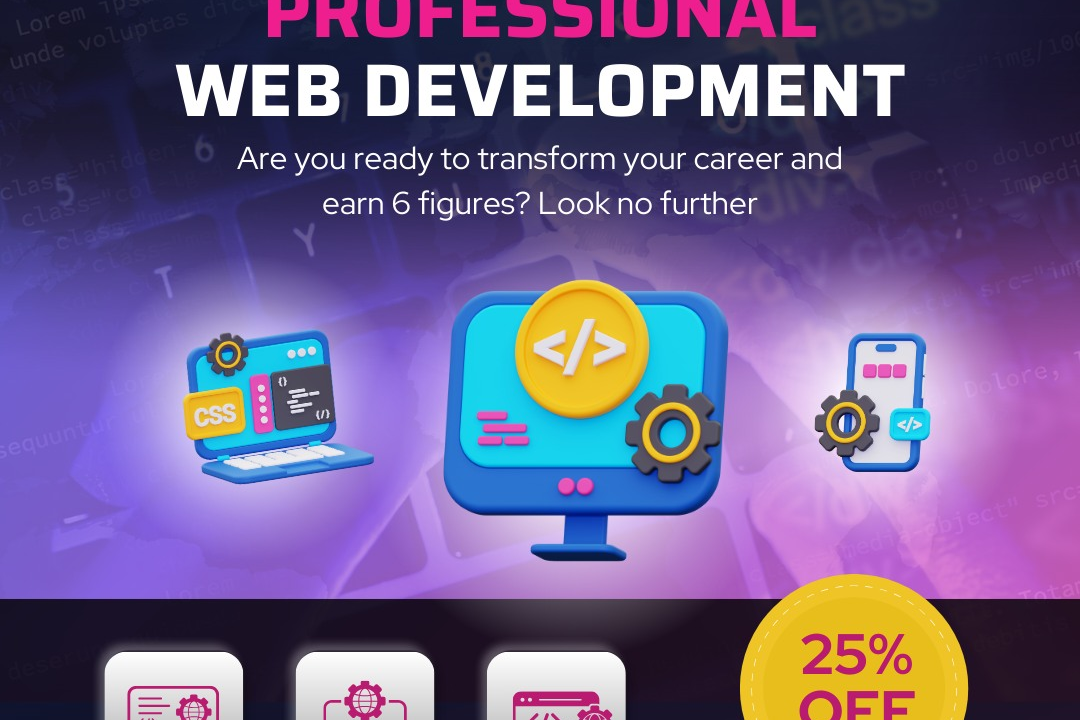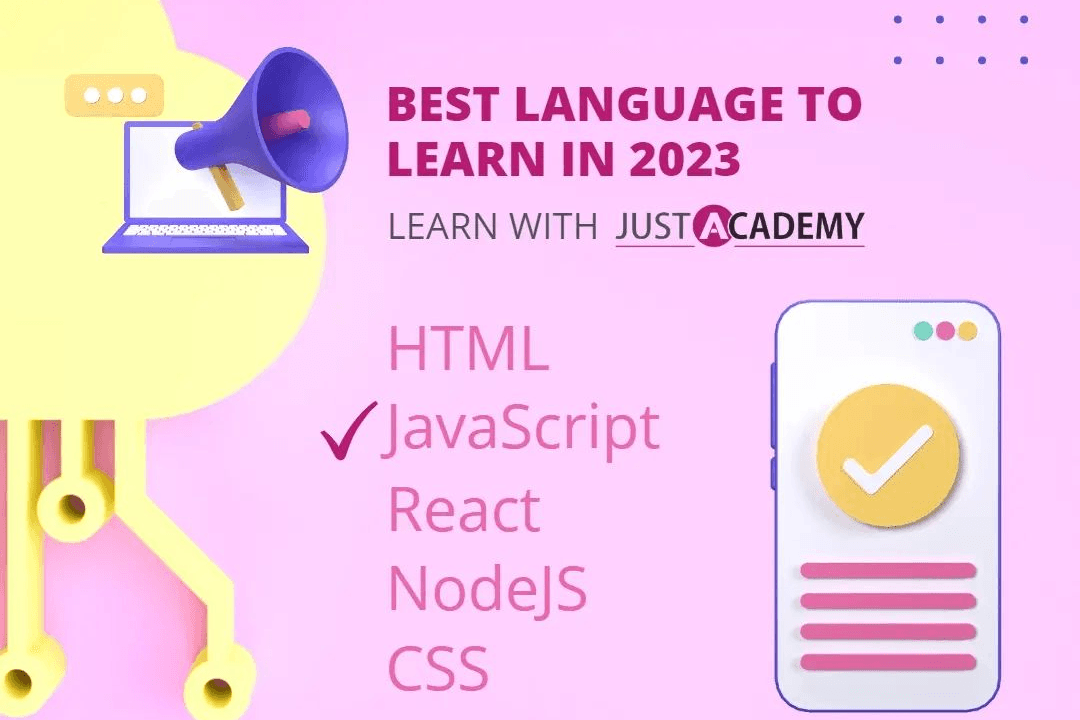Laravel Multiple Choice And Interview Questions
Essential Laravel Multiple Choice and Interview Questions for Developers
Laravel Multiple Choice And Interview Questions
Laravel multiple choice and interview questions are essential tools for both aspiring developers and hiring managers in the tech industry. These questions not only help candidates assess their understanding of Laravel's framework and its functionalities but also enable employers to gauge the practical knowledge and problem-solving abilities of potential hires. By covering key concepts such as routing, middleware, ORM, and security features, these questions provide a comprehensive overview of a candidate’s competency in using Laravel for web development. Additionally, they serve as a foundation for real-time project discussions, allowing developers to showcase their skills and preparation for working on live applications in a collaborative environment.
To Download Our Brochure: https://www.justacademy.co/download-brochure-for-free
Message us for more information: +91 9987184296
1 - What is Laravel?
Laravel is an open source PHP framework designed for web application development following the MVC (Model View Controller) architectural pattern.
2) What is the purpose of routing in Laravel?
Routing in Laravel is used to define the paths (URLs) that the application should respond to, allowing the application to execute specific code or return views based on user requests.
3) How can you define a route in Laravel?
A route in Laravel can be defined using the `Route` facade, such as `Route::get('/welcome', function () { return view('welcome'); });`, which maps the `/welcome` URL to a specific closure function.
4) What are middleware in Laravel?
Middleware in Laravel acts as a bridge between a request and response, allowing you to filter HTTP requests entering your application, providing features like authentication and logging.
5) What is Eloquent ORM in Laravel?
Eloquent ORM (Object Relational Mapping) is Laravel's built in ActiveRecord implementation that provides an elegant, expressive syntax for database interactions and relationships.
6) How do you create a database migration in Laravel?
You can create a migration using the artisan command: `php artisan make:migration create_posts_table`, which generates a migration file in the database/migrations directory.
7) What is a controller in Laravel?
A controller is a class that handles the request logic for your application. Controllers group related request handling logic into a single class, helping maintain organized code.
8) What are Laravel service providers?
Service providers are the central place of application bootstrapping, allowing you to register services, bind classes into the service container, and manage events.
9) How can you define a relationship between models in Laravel?
You can define relationships using methods like `hasOne`, `hasMany`, `belongsTo`, and `belongsToMany` within the model classes, allowing you to interact with related tables easily.
10) What is Blade in Laravel?
Blade is Laravel's templating engine that allows you to create dynamic views with a clean and simple syntax using directives, such as `@if`, `@foreach`, and layout templates.
11 - How do you handle form validation in Laravel?
Form validation in Laravel is typically handled using validation rules in controllers via `Validator` or using Form Request classes that encapsulate the validation logic.
12) What is CSRF protection in Laravel?
CSRF (Cross Site Request Forgery) protection in Laravel is implemented using CSRF tokens to prevent unauthorized commands being transmitted from a user that the application trusts.
13) What is the purpose of the .env file in Laravel?
The `.env` file is used to store environment specific configuration variables, such as database credentials and application keys, allowing easy configuration management across different environments.
14) Explain the concept of Laravel's “Jobs” and “Queues”.
Jobs represent the tasks to be executed, while Queues allow you to defer the execution of jobs, enabling background processing and improving application performance.
15) What are Events and Listeners in Laravel?
Events in Laravel are used to trigger actions when something occurs within your application, while listeners are the classes that listen for those events and handle the defined actions, promoting a decoupled structure.
16) What is a Laravel Seeder?
Seeders in Laravel are classes used to populate the database with sample data for testing. You can create seeders using the artisan command and define the `run` method to insert data into desired tables.
17) What are Laravel Facades?
Facades provide a static interface to classes that are available in the application's service container, allowing developers to access features easily without needing to instantiate classes directly.
18) How can you implement authentication in Laravel?
Laravel provides built in authentication services, allowing you to use the `php artisan make:auth` command to quickly scaffold the authentication views and functionalities, including user registration and login.
19) What is route model binding in Laravel?
Route model binding is a feature that automatically retrieves model instances based on the route parameters, making it easier to work with data directly from the URL.
20) How do you upload files in Laravel?
Files can be uploaded in Laravel using the `request() >file('input_name') >store('directory_name')` method, which handles the file upload and storage securely.
21 - What is a Laravel Policy?
Policies are classes that organize authorization logic around a particular model or resource, allowing you to manage user permissions more easily and systematically.
22) What is the Artisan command line interface in Laravel?
Artisan is Laravel’s command line tool that provides a suite of commands for common tasks such as database migrations, testing, and running application commands, aiding in streamlined development.
23) Explain the concept of Laravel's Resource Controllers.
Resource controllers are a convenient way to handle common CRUD operations by providing a predefined set of controller actions (index, create, store, show, edit, update, destroy) for a specific resource.
24) What is the difference between “soft deletes” and “hard deletes” in Laravel?
Soft deletes in Laravel mark records as deleted by adding a timestamp to a `deleted_at` column, allowing the data to be restored later. Hard deletes permanently remove records from the database.
25) How do you create custom validation rules in Laravel?
Custom validation rules can be created by using the `Rule` facade, or by defining a custom request class that implements specific logic for the validation process.
26) What is Laravel's built in caching system?
Laravel's caching system allows for data storage in various backends (like Redis or Memcached) to optimize application performance by reducing database queries and speeding up the response to user requests.
27) How can you schedule tasks in Laravel?
Laravel provides a task scheduling feature that enables recurring tasks to be scheduled using the `schedule` method in the `app/Console/Kernel.php` file, making it easy to automate operations.
28) What are Collections in Laravel?
Collections are a powerful wrapper around arrays that provide an expressive interface for manipulating data sets, offering methods for filtering, mapping, and reducing data while supporting a fluent syntax.
29) How do you handle localization in Laravel?
Localization in Laravel is managed using language files stored in the `resources/lang` directory, allowing you to define translations for different languages and easily switch between them.
30) What is a Form Request in Laravel?
Form Request is a custom request class that encapsulates validation logic and authorization checks, offering a clean way to handle incoming HTTP requests.
31 - What is the purpose of the Service Container in Laravel?
The Service Container is a powerful tool for managing class dependencies and performing dependency injection, ensuring that classes can be easily instantiated without needing to manage dependencies manually.
32) What are Blade Components in Laravel?
Blade components are reusable pieces of code that can be defined as standalone HTML elements, promoting cleaner and more organized view files by breaking down complex interfaces into manageable chunks.
33) How does Laravel handle file storage?
Laravel offers a unified API for file storage through the `Storage` facade, which supports various storage options, such as local, Amazon S3, or other cloud services, streamlining file management.
34) What is a job middleware in Laravel?
Job middleware is a mechanism that allows you to wrap job execution with additional logic, similar to HTTP middleware but specifically for queued jobs, enabling finer control over job processing.
35) How do you perform unit testing in Laravel?
Laravel provides a testing suite built on PHPUnit, allowing you to write unit and feature tests to ensure your application components work as expected, promoting better software quality and reliability.
36) What are Laravel's “Scopes” in Eloquent?
Scopes are a convenient way to encapsulate query logic within a model, allowing you to define common query constraints that can be reused across different queries, promoting cleaner code.
37) How can you use Events for data synchronization in Laravel?
Events can be leveraged to synchronize data across different parts of your application or notify external systems when data changes occur, promoting a decoupled architecture.
38) What is the purpose of the ` bootstrap` directory in Laravel?
The `bootstrap` directory contains files that are responsible for bootstrapping the framework, including the application instance and configuration adjustments, initializing the application environment upon a request.
39) How can you implement Laravel's pagination feature?
Laravel provides built in pagination support through the `paginate` method, which can be used to divide query results across multiple pages effortlessly and is designed to work with Blade templates.
40) What is a Laravel Mix?
Laravel Mix is a tool built on top of Webpack, simplifying the process of compiling and bundling JavaScript and CSS assets, enabling developers to define their asset build steps using a simple fluent API.
These points provide a comprehensive understanding of Laravel's features and functionalities and would be instrumental in creating informative content for your audience at JustAcademy.
Course Overview
The “Laravel Multiple Choice and Interview Questions” course offered by JustAcademy is designed to equip learners with a comprehensive understanding of Laravel through a series of carefully curated multiple-choice questions and practical interview scenarios. This course covers essential concepts, including routing, middleware, Eloquent ORM, Blade templating, and more, ensuring participants build a solid foundation in Laravel. By engaging with real-time project-based questions and detailed explanations, learners will enhance their problem-solving skills and gain the confidence to tackle technical interviews effectively. Whether you are a beginner or looking to refresh your knowledge, this course provides the necessary tools to excel in Laravel development.
Course Description
The “Laravel Multiple Choice and Interview Questions” course at JustAcademy offers an engaging and comprehensive approach to mastering Laravel, one of the most popular PHP frameworks in web development. This course features a series of meticulously crafted multiple-choice questions that cover key concepts such as routing, middleware, Eloquent ORM, and Blade templating, coupled with real-world interview scenarios to prepare learners for technical assessments. Participants will not only deepen their understanding of Laravel but also hone their problem-solving abilities, making them proficient and confident for interviews and practical applications in real-time projects. Ideal for both beginners and experienced developers, this course paves the way for success in Laravel development careers.
Key Features
1 - Comprehensive Tool Coverage: Provides hands-on training with a range of industry-standard testing tools, including Selenium, JIRA, LoadRunner, and TestRail.
2) Practical Exercises: Features real-world exercises and case studies to apply tools in various testing scenarios.
3) Interactive Learning: Includes interactive sessions with industry experts for personalized feedback and guidance.
4) Detailed Tutorials: Offers extensive tutorials and documentation on tool functionalities and best practices.
5) Advanced Techniques: Covers both fundamental and advanced techniques for using testing tools effectively.
6) Data Visualization: Integrates tools for visualizing test metrics and results, enhancing data interpretation and decision-making.
7) Tool Integration: Teaches how to integrate testing tools into the software development lifecycle for streamlined workflows.
8) Project-Based Learning: Focuses on project-based learning to build practical skills and create a portfolio of completed tasks.
9) Career Support: Provides resources and support for applying learned skills to real-world job scenarios, including resume building and interview preparation.
10) Up-to-Date Content: Ensures that course materials reflect the latest industry standards and tool updates.
Benefits of taking our course
Functional Tools
1 - Laravel Framework
The core tool utilized in our training program is the Laravel framework itself. Renowned for its elegant syntax and powerful features, Laravel simplifies common tasks such as routing, authentication, and session management. In the course, students gain hands on experience with Laravel's MVC architecture, allowing them to develop robust web applications efficiently. They learn to leverage built in functionalities such as Eloquent ORM for database interactions, which promotes clean and expressive database queries.
2) PHP
As Laravel is a PHP framework, a solid understanding of PHP is essential. The training program delves into PHP fundamentals, covering variables, control structures, functions, and object oriented programming (OOP) concepts. Students practice writing PHP code independently, ensuring they grasp how it interfaces with Laravel to create dynamic web applications. Effective use of PHP within Laravel enables learners to build custom solutions tailored to specific business needs.
3) Composer
Composer is the dependency management tool used to manage packages and libraries in Laravel projects. The course emphasizes the importance of Composer for installing and updating Laravel dependencies. Students learn to create and maintain the `composer.json` file, allowing for seamless integration of third party libraries to enhance application functionality. Understanding Composer is crucial for managing project dependencies and ensuring that the development environment remains up to date with the latest packages.
4) MySQL or Database Management Systems
Database management is a crucial component of web application development. Our course includes training on MySQL, the most commonly used database system with Laravel. Students learn how to design databases, create tables, and execute SQL queries from within Laravel using Eloquent ORM. Understanding data relationships, migrations, and seeders equips students with the skills necessary to handle data effectively, ensuring their applications are both functional and efficient.
5) Postman
Postman is a popular API testing tool that allows developers to test and interact with APIs easily. In the course, students use Postman to send requests to their Laravel applications and examine responses. This practical experience is invaluable for mastering RESTful APIs, enabling learners to build and test their application’s backend services effectively. By understanding how to use Postman, students also learn to document their APIs, which is crucial for collaboration in team environments.
6) Git and GitHub
Version control is essential for modern software development, and Git is the industry standard tool for tracking changes in code. The training program incorporates Git and GitHub to teach students best practices for collaborating on code with others. They learn to create repositories, manage branches, and resolve merge conflicts, ensuring a smooth workflow in team projects. Familiarity with GitHub also allows students to showcase their work and contribute to open source projects after completing the course.
Sure, here are additional key components and tools that are beneficial for learners participating in the Laravel course at JustAcademy:
7) HTML, CSS, and JavaScript
A foundational understanding of HTML, CSS, and JavaScript is essential for any web developer. In this course, students learn how to integrate front end technologies with Laravel to create aesthetically pleasing and interactive web applications. HTML provides the structure of web pages, CSS handles styling, and JavaScript adds interactivity. By mastering these languages, learners gain the skills needed to develop fully functional and engaging user interfaces.
8) Blade Templating Engine
Laravel includes Blade, a powerful templating engine that streamlines the process of creating dynamic views. The course covers how to use Blade to create reusable templates, making it easier to manage layout and design across different views. Students learn about Blade directives, control structures, and template inheritance, which helps in maintaining clean and organized code.
9) RESTful Routing
Understanding RESTful routing is crucial for building APIs using Laravel. The course educates students on how to define API routes and effectively handle HTTP requests. Learners practice implementing CRUD (Create, Read, Update, Delete) operations, enabling them to create robust RESTful APIs that communicate between the front end and back end of their applications.
10) Middleware
Middleware provides a convenient mechanism for filtering HTTP requests entering the application. This course explores how to create and use middleware in Laravel to handle tasks such as authentication, logging, and CORS (Cross Origin Resource Sharing). By mastering middleware, students learn to implement additional layers of security and functionality in their applications effectively.
11 - Security Best Practices
Security is a major concern in web development. The training includes best practices for securing Laravel applications, such as data validation, securing routes, protecting against CSRF (Cross Site Request Forgery) attacks, and implementing user authentication. Students learn how to leverage Laravel's built in security features, ensuring their applications are robust against common vulnerabilities.
12) Testing with PHPUnit
Testing is an integral part of the development process, and Laravel makes it easy to write unit and feature tests using PHPUnit. The course teaches students how to write and run tests to ensure code quality and functionality throughout the development cycle. By adopting testing best practices, learners can build confidence in their code and deliver high quality applications that meet user needs.
13) Deployment and Environment Configuration
Once an application is developed, understanding how to deploy it is essential. The course includes insights into deploying Laravel applications on popular hosting platforms or cloud providers. Students learn about environment configuration using `.env` files, ensuring that application settings and sensitive information are properly managed before going live.
14) Laravel Packages and Extensions
Laravel has a vibrant ecosystem of packages that can significantly extend the framework's functionality. Students are introduced to popular packages such as Laravel Debugbar, Spatie's permission package, and more. Learning how to integrate these packages into projects prepares students to use existing solutions to enhance their applications, saving time and effort in development.
15) Project Management and Agile Methodology
The course includes an overview of project management concepts, particularly Agile methodologies. Students learn how to apply Agile principles to their development workflow, emphasizing iterative development and teamwork. This knowledge is crucial for collaborating effectively in a professional environment, as many organizations operate using Agile frameworks.
By covering these additional points, the JustAcademy Laravel course ensures that students are well equipped with a comprehensive skill set to thrive in web development.
Browse our course links : https://www.justacademy.co/all-courses
To Join our FREE DEMO Session: Click Here
This information is sourced from JustAcademy
Contact Info:
Roshan Chaturvedi
Message us on Whatsapp:
Email id: info@justacademy.co
Interview Questions For React Native Developer












